Thanks to Alexandra Morton.
If you care about salmon, bears, orca, dolphins, wolves, old growth forest, or fishermen and haven't signed this letter yet, please do it now. Wherever you are in the world, we need your signature to pressure our government into action.
Petition at:http://spreadsheets.google.com/viewform?formkey=cEkxX3p3MGFBbWNVVGNVU3lxQnBwQmc6MA ..
Background at: http://www.adopt-a-fry.org/
Forwarded message:
Dear Folks
Our letter has become too big to send to all of you, I will try to post it later today on www.adopt-a-fry.org. This email below and the letter went to the Minister and the Premier a few minutes ago.Please see the Globe and Mail article below. I believe we will need 2-3 times the signatures we have now to move government to do the right thing.My deepest thanks to all of you alexandraDear Minister of Fisheries the honourable Gail Shea and Premier Campbell:As noted in the Globe and Mail this morning, I have been sending you this letter for a month with no reply. What began with 100 signatures from local fishermen has grown to 7,309 signatures from around the world, but predominately British Columbia (5,785).Premier Campbell, your government has allowed this industry to expand in the face of the most alarming wild salmon declines we have ever seen on this coast.Minister Shea, this is not a situation of your making, but you have the opportunity to bring reason to this mess.I will continue to take signatures to help you move past status quo and bring salmon “farming” into compliance with the laws of Canada. BC Supreme Court ruled they are no longer “farms,” they are a fishery. There is debate now as to whether Marine Harvest and the other salmon “farming” companies actually own their fish when they put them into Canadian waters,All we are asking is for the Fisheries Act to be applied to this industry. As wild salmon decline all the other related fisheries have been increasingly restricted.....except the marine feedlot fishery. This is a threat to our coastal communities and the economy of British Columbia.Standing by,Alexandra MortonTo sign the petition to apply the Fisheries Act to fish farms the way it is applied to fishermen please click on the link below. http ://spreadsheets.google.com/viewform?formkey=cEkxX3p3MGFBbWNVVGNVU3lxQnBwQmc6MA. .
The Globe and Mail
Fisheries ignored 500 names. Can it ignore 5,000?
by Mark Hume March 23, 2009
VANCOUVER -- The form letter that Premier Gordon Campbell and federal Fisheries Minister Gail Shea keep ignoring is just getting longer. In circulation for only a few weeks, it already has nearly 5,000 signatories, and more names are being added daily as it circulates on the Web.
When it first went to the politicians, 500 names were affixed. It was ignored, so it went back into circulation and soon was resubmitted with 2,000 names, then with 4,000. It's making the rounds again this week, and is still growing.
Started by research scientist and fisheries activist Alexandra Morton, the letter asks the government to take decisive action to protect wild salmon from the threats posed by salmon farms. One of the key requests is that salmon farms be moved away from wild salmon migration routes because of the transmission of sea lice from caged fish.
The people who signed the letter worry that salmon farms are an unacceptable risk to wild stocks. And that fear is about to be heightened by a study being released today that shows juvenile sockeye from the Fraser River are encountering fish farms at an alarming rate.
Michael Price, a biologist with Raincoast Conservation Foundation, and Craig Orr, executive director of Watershed Watch, studied 800 wild sockeye collected in 2007-08 in northern Georgia Strait. About 70 per cent of those fish had one to 20 sea lice attached to them. And the fish caught near farms were the most likely to be infected.
"The lice levels appear to be higher near farms," said Mr. Price, who is still analyzing the data.Past studies by Ms. Morton have documented the spread of lice from farms to wild pink and chum salmon in the Broughton Archipelago, an area off Vancouver Island's northeast shoulder. But the study by Mr. Price and Dr. Orr looks at sockeye, and for the first time uses DNA analysis to trace the infected fish to their watershed of origin.The researchers conclude most of the sockeye they caught migrating near salmon farms (60 per cent in 2007 and 99 per cent in 2008) came from the Fraser River.
Sockeye are the most valuable of all salmon species because they draw a higher price on the market and because they are the fish of choice for native food and ceremonial fisheries. Mr. Price and Dr. Orr have now linked the most valuable fish, from B.C.'s most important salmon river, to farms and lice. Mr. Price said juvenile sockeye can follow three routes as they migrate through Georgia Strait on the outward leg of their journey to the Gulf of Alaska.
"But all these routes converge before the Broughton Archipelago [at the north end of Georgia Strait] where there are a dozen farms," he said. "It's clear that no fish can make this journey without encountering a farm."
Mr. Price said studies have shown that one to three lice can kill a juvenile pink salmon, so it's fair to assume sockeye are dying as well. Could this help explain the collapse of Fraser River sockeye stocks? Some people will no doubt find this an alarming possibility.
The form letter, triggered by concerns about pink and chum, describes wild salmon as "the backbone of the B.C. Coast," and urges both Ms. Shea and Mr. Campbell to protect migrating wild stocks from fish farms. So far, the politicians have been able to ignore the ever-growing letter. But the new study can only ratchet up the pressure. Now that people know it's not just pink salmon, but Fraser River sockeye stocks that are at risk, one has to wonder how many more names will get added to that letter.
Saturday, May 16, 2009
Subscribe to:
Post Comments (Atom)





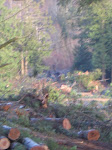

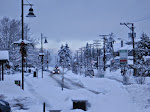
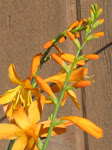

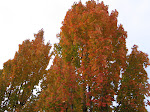
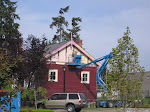








No comments:
Post a Comment